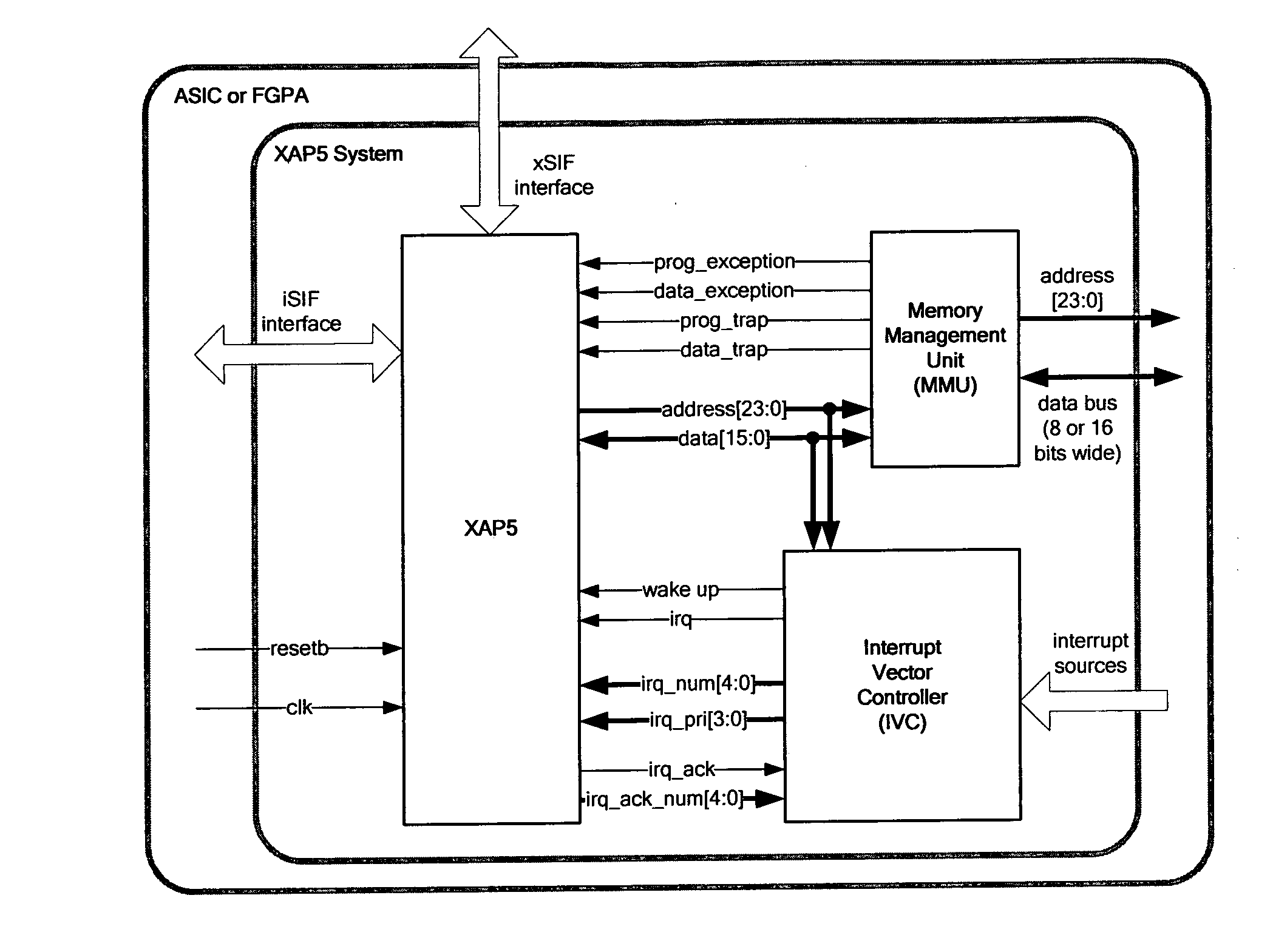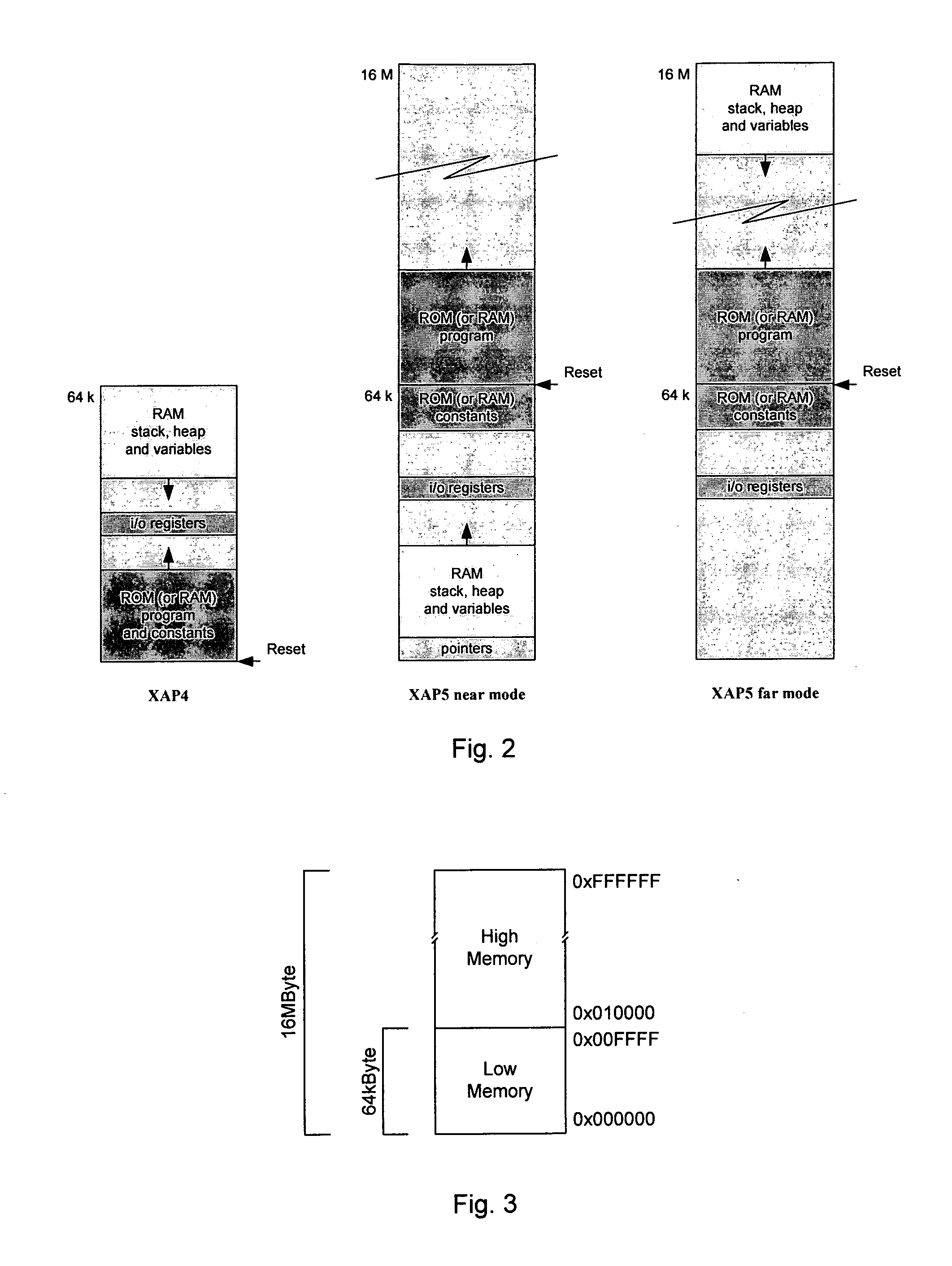Data processing apparatus
a data processing and data technology, applied in the field of data processing apparatuses, can solve the problems of limiting the address space of 8-bit and 16-bit processors, limiting the range of operations of function pointers, and creating complexity for programmer and software compilers and linking tools, so as to minimise code and data size in memory and achieve high reliability.
- Summary
- Abstract
- Description
- Claims
- Application Information
AI Technical Summary
Benefits of technology
Problems solved by technology
Method used
Image
Examples
Embodiment Construction
Introduction
[0226]The processor (referred to herein as XAP5, or the XAP5 processor) comprises 8 normal 16-bit registers (R0-R7). However, the address registers, that is, the Program Counter (PC), Stack Pointer (SP), and Breakpoint register are 24-bit.
[0227]The associated software toolkit is a generic Integrated Development Environment and runs on most computing platforms.
[0228]The processor instruction set and toolkit have been developed together. The instruction set has been optimised to give good code density, leading to low power consumption and low silicon cost. The compile chain is based on the GNU tools, GCC C compiler and the GNU Binutils assembler and linker.
[0229]The processor is aimed at CMOS processes from 700 to 65 nm. Clock speeds depend upon the specific hardware implementation and are a trade-off with power consumption. It is expected to run at clock speeds from 10 kHz to 100 MHz. The small hardware implementation contains about 18 k gates with a typical memory manage...
PUM
 Login to View More
Login to View More Abstract
Description
Claims
Application Information
 Login to View More
Login to View More - R&D
- Intellectual Property
- Life Sciences
- Materials
- Tech Scout
- Unparalleled Data Quality
- Higher Quality Content
- 60% Fewer Hallucinations
Browse by: Latest US Patents, China's latest patents, Technical Efficacy Thesaurus, Application Domain, Technology Topic, Popular Technical Reports.
© 2025 PatSnap. All rights reserved.Legal|Privacy policy|Modern Slavery Act Transparency Statement|Sitemap|About US| Contact US: help@patsnap.com



